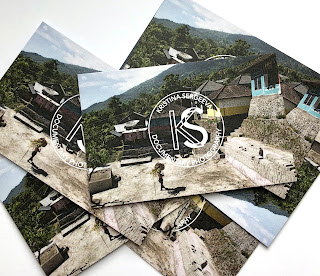Research Brief: The aim of this project is to better my understanding of colour and the psychological theories behind colour use.
McLeod, J. Colour Psychology Today.
Notes from, Chapter 4, Colour Associations:
- 'Colour association can be historical, national, cultural, personal and linguistic...it is also visual'
- Colour associations differ with cultures. This is important to recognise when applying colour to branding. Showing this understanding is a way of demonstrating respect to cultures
-
- Each day has its own colour. The ancients believed and practiced this. It is something that has been passed down through the ages. The example of the Queen often wearing green on her visits on a friday was given in the text.
Monday - Violet
- Consider achievements for the week
Tuesday - Red
- Put the thoughts and plans into action that you are most passionate about
Wednesday - Yellow
- Oversee everything that is in place
Thursday - Sky Blue
- Communicate your strategy to all concerned
- Ensure everyone is supported and confident they will complete the weekly task on time
Friday - Green
- Check over final details
Saturday - Indigo
- Relax, enjoy hobbies, activities
Sunday - Orange
- Sociable, family gatherings, rest
Note: It might be interesting to photograph the same people each day of the week for a set period of time and investigate whether there are colour trends that emerge.
Corporate Blues
- Stress in the working environment is an increasing problem in today's society. McLeod suggests that more leaders and heads of industry need to test out colourful environments to determine the full effect that can be had. Although not all stress related issues can be solved through subtle changes to the environment, these changes could prevent in the future.
Note: Consider how design and colour can help address poor mental health in the workplace.
- Wearing indigo/navy blue reduces blood pressure, keeps you calm and reduces sweating. It nourishes on a mental level. Having indigo/navy objects around you can also help focus the mind
- Violet is the colour of inspiration and creativity. View or consume violet things to help recharge your energy
- Think pink to avoid confrontation.
- Magenta is uplifting, inspiring and fearless. This is a colour that can boost your confidence
- Orange is the colour of happiness and can help life the mood
This information has to be interpreted with an open mind. In this case, it is one person's opinion. Whether this is chosen to be believed by all, is up to the individual.
- Colour is the most powerful form of communication
- 'The colour choice and meaning change, dependent on the business, the environment, the placement, culture and the country'
Its Nice That. Podcast, Colour. Ft. Laurie Pressman, Stuart Semple and Angela Wright
Notes:
- David Hockney
- Q:Do you think there are any brands that have particularly harnessed a colour well? A: Coco Cola red
Angela Wright, Colour Psychologist
- 'we don't respond to colour in isolation, we respond to a number of colours'
- Red, blue, yellow, green. the four psychological primary colours
- Yellow activates emotions
- Red is physical, raising pulse rate and blood pressure
- Blue, intelectual activity
- 'Black is a security balnket'
- 'Grey is the colour of austerity'
- When consciously choosing clothing items, individuals are making unconsciously making decisions that they are not aware of
- 'we wouldn't have survived evolution as well as we did if we didn't have colour. Colour is the universal nonverbal language that everybody speaks'
- 'we are born with an instinct for colour'
- The worlds favourite colour is blue, proven by research
- Blind people can differentiate colours with their finger tips. Some can not only say that they are different colours, but also decipher which colour it is





























